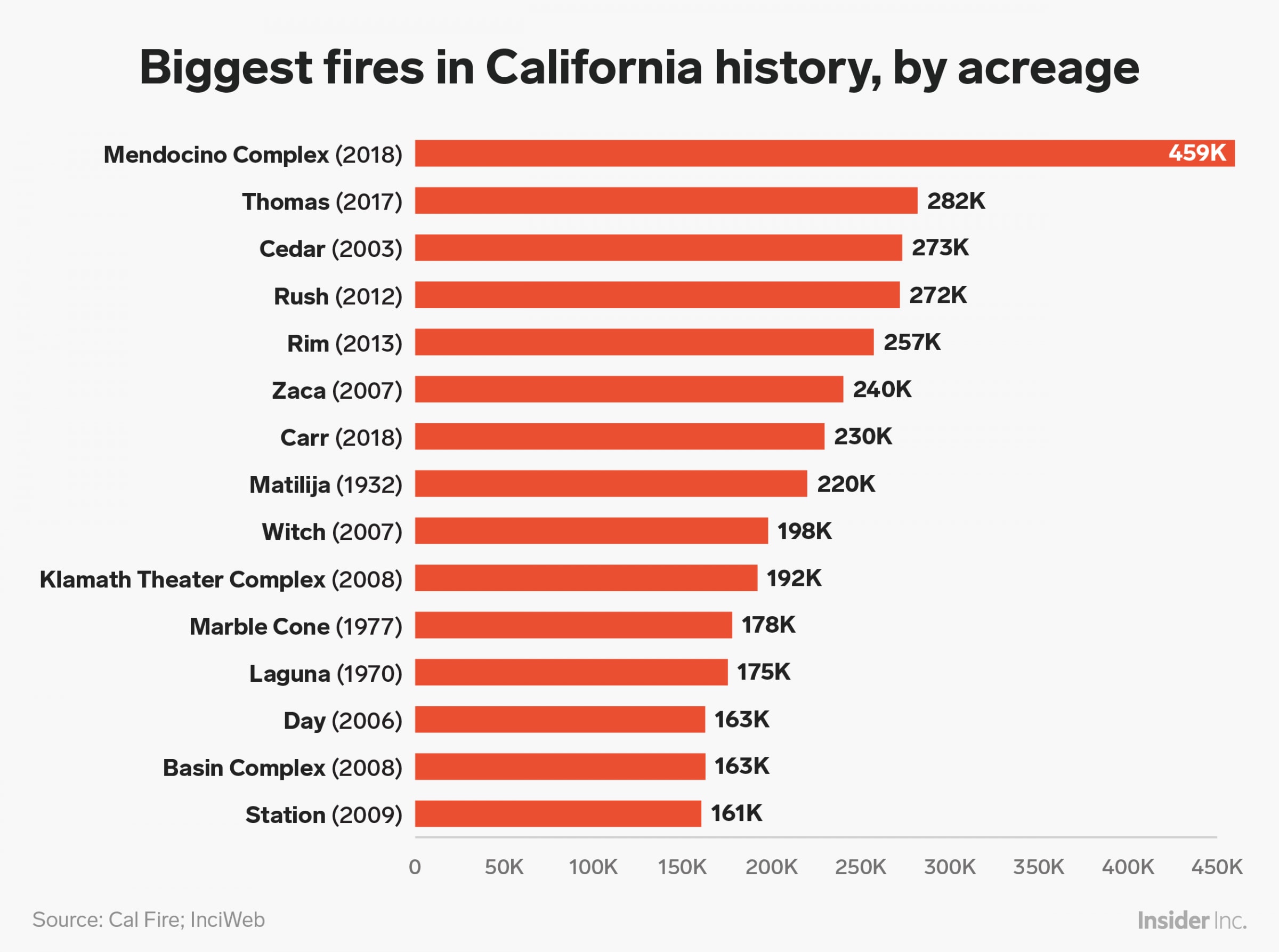Why are wildfires getting worse?

2018 has been the worst wildfire year on record for California.
Image: REUTERS
Stay up to date:
United States
California is currently in the grips of its deadliest wildfire while two others rage, in what has been its worst wildfire year on record.
The Camp wildfire in the north of the US state has burned through more than 50,000 hectares and is the most deadly in California’s history.
The Camp fire has achieved the grim milestone of breaking an 85 year-old record, having already surpassed the 31 deaths recorded in the 1933 Griffith Park wildfire.
California’s deadliest wildfires

Further south, two wildfires near Los Angeles – the Woolsey fire and Hill fire – continue to blaze, tearing through neighbourhoods in Malibu and Calabasas.
These three wildfires combined have forced more 300,000 people from their homes across California.
This mass evacuation and the deadly nature of the Camp wildfire is partly due to California’s huge population growth: there are now 40 million people living in the state, double the number in 1970.
And many more are living in wildfire-prone areas. According to research published earlier this year, the total number of homes and land developed in areas of the US prone to wildfire has increased by nearly 1350% since 1940.
Burning bigger
Wildfires have always been part of California and several other US states’ natural ecology.
However, while significant population growth can help explain rising death tolls, it cannot address the growing severity and frequency of wildfires.
This year the US has not only suffered its most deadly wildfire with the Camp fire; it has also suffered from the biggest wildfire in its history.
The Mendocino Complex fire raged from July to September and destroyed 459,000 acres (185,750 hectares).

Source: Business Insider
California’s seven biggest wildfires ever have all occurred since 2003, with 12 of the 15 biggest fires occurring within this period too.
The Californian state government itself links the increasing size and frequency of wildfires with climate change, estimating that the average area burned statewide by wildfires could increase by 77% by 2100.
Other research says the acreage in California suffering from wildfires could increase by up to 150% by 2039 due to climate change, with wildfires across the US as a whole increasing by 500%.
Climate culprit
The US is not the only country to suffer from unprecedented wildfires in 2018: countries including the UK, Portugal and Greece all experienced major fires in their countryside this summer. Wildfires even raged as far north as the Arctic Circle regions of Norway, Sweden, Finland and Russia.
All occurred during sustained heatwaves. Hot weather dries out grasses and plants making it easy for a fire to quickly gain hold.
This year is expected to be the fourth hottest on record, despite a prolonged cold winter, and is in line with the global trend of rising temperatures.

Surface temperatures on land in particular are accelerating at a rapid rate.
Climate scientists put these increases down to the heat being trapped in the atmosphere by greenhouse gases such as carbon dioxide and methane.
The current effect that these gases are having on the planet’s temperature has been likened by one climate scientist to having one microwave oven every square foot running at full power for six minutes.
“The impact of wildfires in California has been devastating,” says Emily Farnworth, the World Economic Forum’s Head of Climate Change.
“This is a painful and stark reality of what it means to be living with the effects of climate change. There is time to prevent the situation getting much worse – but it needs strong leadership from businesses and governments to take the urgent action needed.”
Don't miss any update on this topic
Create a free account and access your personalized content collection with our latest publications and analyses.
License and Republishing
World Economic Forum articles may be republished in accordance with the Creative Commons Attribution-NonCommercial-NoDerivatives 4.0 International Public License, and in accordance with our Terms of Use.
The views expressed in this article are those of the author alone and not the World Economic Forum.
Related topics:
Forum Stories newsletter
Bringing you weekly curated insights and analysis on the global issues that matter.
More on Climate ActionSee all
Tejashree Joshi
May 8, 2025
Tom Crowfoot
May 7, 2025
Nii Ahele Nunoo
May 6, 2025
Alfredo Giron
May 6, 2025
Denise Rotondo and Chris Leong
May 5, 2025






